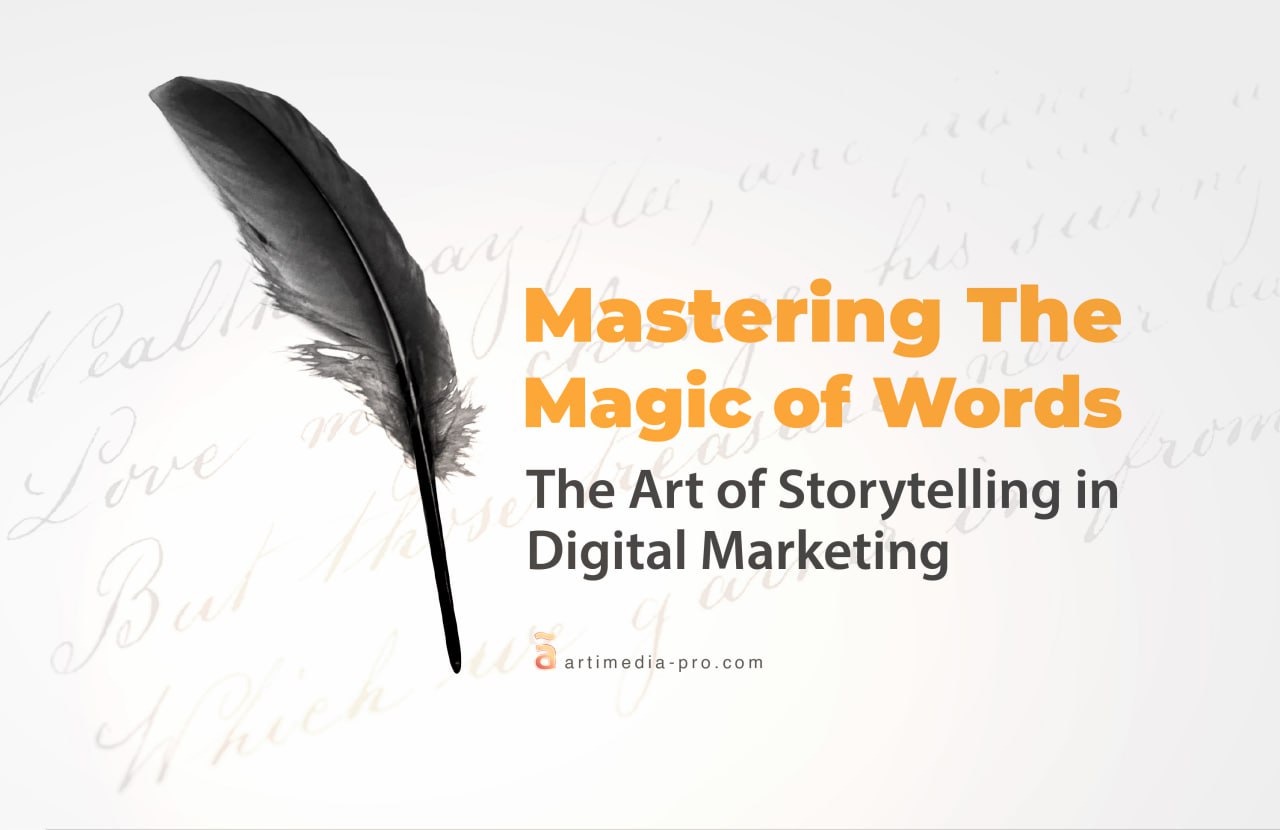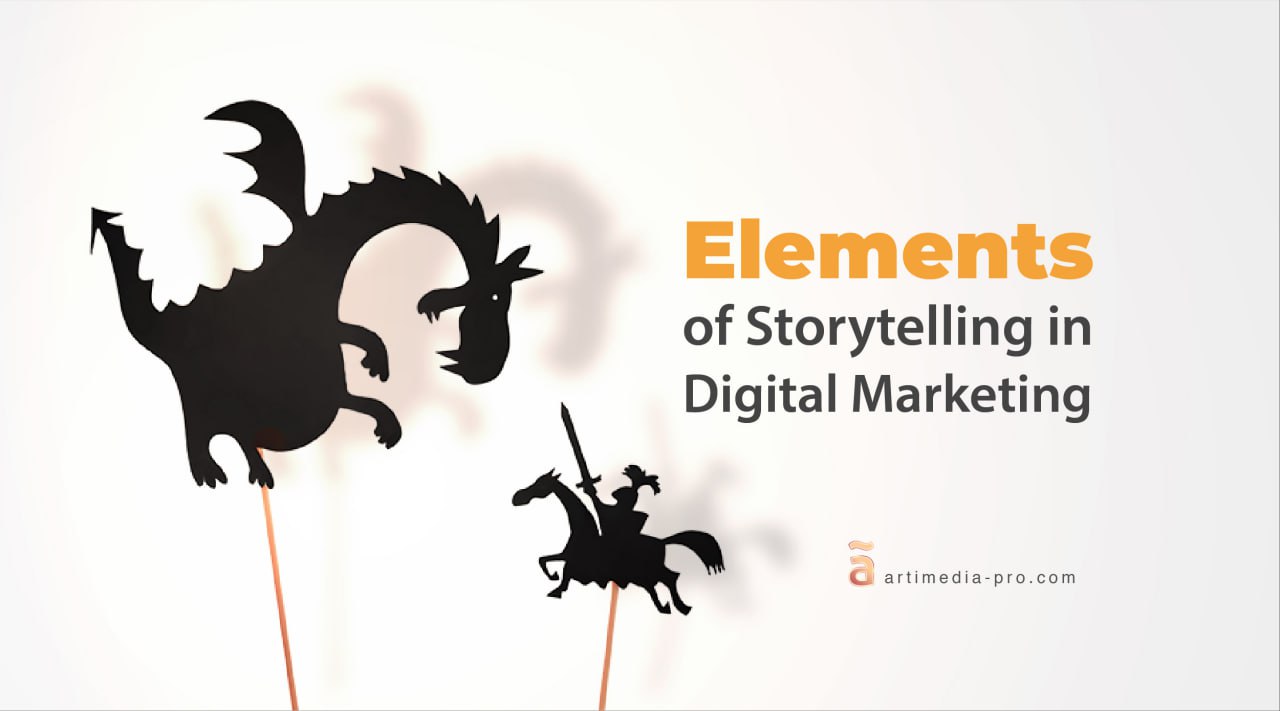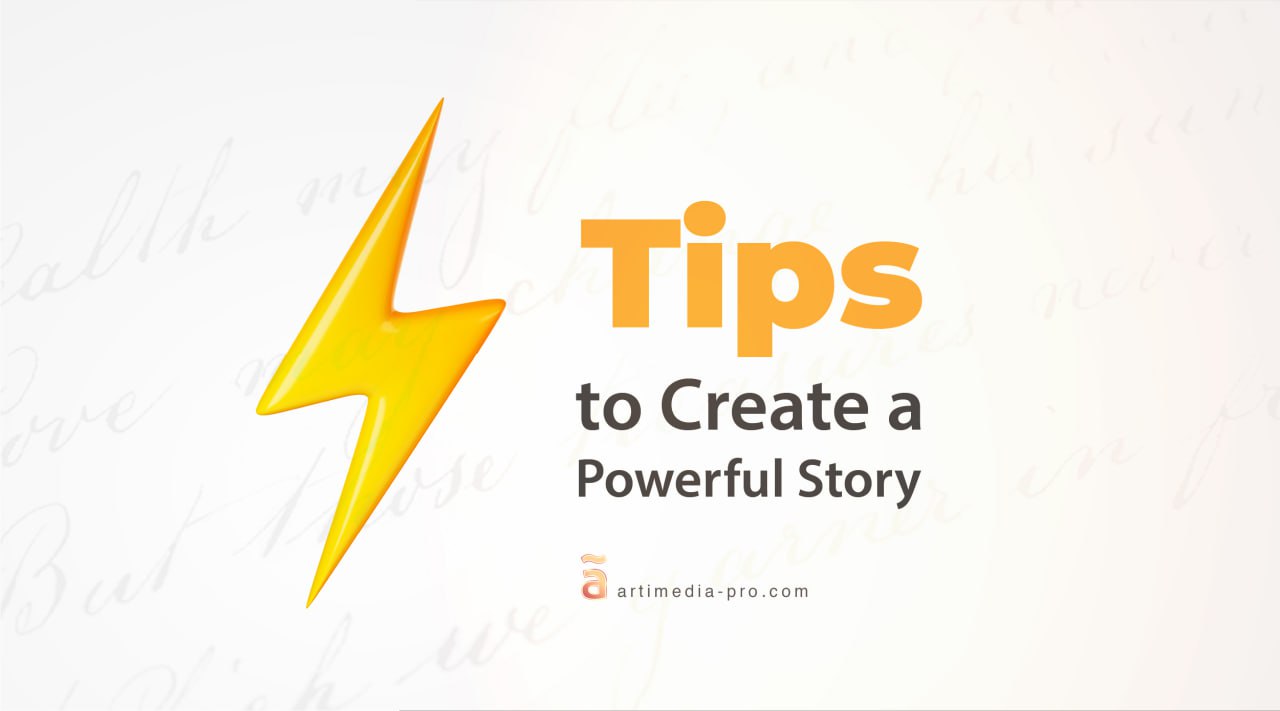Table of Contents
The art of storytelling is a great use of words to tell your story in the best way, and using this great technique is an amazing way to boost your brand awareness and exposure among your targeted audience.
In fact, the art of storytelling in digital marketing does not have those big differences from the traditional one, although it must work by SEO best practices to achieve results and rank high in search engine result pages (SERPs).
In this blog post, we are going to share with you powerful information about the art of storytelling definition, its elements, types, and effective steps to create your story in the digital marketing world, moreover, the benefits of storytelling.
What Is Storytelling in Digital Marketing?
The art of storytelling is part of content marketing in digital marketing, where you create a piece of content in the form of a story to share with your audience, make them interested in your business, and eventually buy from you.
Thus, the art of storytelling is the art of writing and sharing your story about your career path, product creation, business starting, or any other detail you think your targeted audience will be interested in.
Moreover, storytelling marketing aims to build interest and attention around your story, with words that touch your audience’s feelings and emotions in the best way to make them attach to your brand.
However, we know that storytelling has been around for years, but in order to use it in the digital marketing funnel effectively you must adjust your written content based on SEO white hat techniques.
Elements of Storytelling in Digital Marketing:
Although storytelling in digital marketing has some extra requirements related to SEO and other technical aspects, however, we can say that the basic elements of storytelling are the same as traditional storytelling.
· The Tone of Voice:
The used tone of voice in storytelling is directly related to the brand’s voice of tone, moreover, it is responsible for all the emotional mood and impacts of the story, which can range from cheerful to serious, depending on the target audience.
· The Hook:
The hook in storytelling is the opening paragraph that grabs the audience’s attention and encourages them to continue reading or listening.
Thus, it should be interesting, attention-grabbing, and often unexpected to serve its goal to make the audience curious enough to read or listen further into the story.
· Understandable Plot:
The narrative structure of the story, or the journey the customer takes from discovering the brand/product to eventually making a purchase.
In other business-related words, the problem or challenge that the customer faces that your brand/product can solve easily.
· Targeted Audience:
Who you are talking to in your storytelling marketing, what are their needs, and backgrounds, knowing all of that will help you to know your consumer behavior and communicate with them effectively and craft your story in the most interesting way for them.
· Visuals:
The use of images, videos, colors, and other visual elements to support and enhance the storytelling experience.
Moreover, the correct usage of your visuals will help your targeted audience to be more related and attached to your story.
· Call to action:
The invitation to the customer to take a specific action, such as making a purchase, signing up for a newsletter, or sharing the story with others.
However, successful storytelling in digital marketing use undirect CTA to keep it more natural for the reader.
Steps to Create a Storytelling Marketing Strategy:
In order to create effective storytelling in your digital marketing strategy you must answer these 5 basic questions effectively for any storytelling type:
· Who?
Identify your target audience who you want to reach through your digital marketing storytelling, as you need to determine their age, gender, interests, buying behavior, and preferences.
· What?
Decide on the message you want to convey from the story you are telling, however, keep in mind that it should be engaging, relevant, and valuable for your audience.
· Where?
Choose the social media platforms and digital channels based on the target audience’s needs and preferences, this could include social media platforms, email marketing, content marketing, digital ads, etc.
· When?
The timing of your storytelling is crucial, thus, plan your storytelling with a clear and focused timeline that includes the length of your campaign, the frequency of your content or ad release, and key events or holidays that may affect your strategy.
And all of that must be built based on your targeted audience’s insights.
· Why?
Have a clear understanding of your objectives and goals behind your storytelling, whether you need to increase brand awareness, customer loyalty, sales, or engagement.
Moreover, make sure that all storytelling elements align with your goals, and track your key performance indicators to measure the success and ROI of your digital marketing efforts.
Types of Storytelling in Digital Marketing:
The art of storytelling in digital marketing has many available types, and all of them give you a good chance to tell your story effectively.
However, choosing between these types should rely on your targeted audience preference, and your business industry.
· Video Storytelling:
Videos are a great way to tell stories, especially with the big growth of YouTube, Instagram reels, and other forms of videos, furthermore, videos connect your services with your audience successfully.
You can use footage, animation, and live-action scenes to create a narrative that captures the essence of your brand and grab your audience’s attention.
· Social Media Storytelling:
Social media is a great platform for storytelling in digital marketing, whether you build your strategy based on organic work or based on social media paid ads.
You can rely on Instagram Explore page or stories, Facebook Live, and Twitter threads to share your brand story with your followers in the best way.
· Infographic Storytelling:
Infographics are another great way to tell stories using data and visuals to illustrate your brand’s message.
More than that, infographics are a great way if your audience is more into visuals rather than written.
· Podcast Storytelling:
Podcasts are a popular way to tell stories through audio, in digital and traditional marketing strategies.
However, you can share your brand’s story through interviews, product demonstrations, and other audio content and share it all over suitable online channels.
· Interactive Storytelling:
By using games, quizzes, and other interactive content you can create interactive storytelling type, in an engaging way to tell your brand’s story.
· Email Storytelling:
Email marketing is a great way to tell a story that connects with your audience. You can use email campaigns to share your brand’s message and the story behind it.
Moreover, if you need to share updates about your products or services then email storytelling is a great way to do so.
6 Benefits of Storytelling in Digital Marketing Strategy:
If you are wondering why the art of storytelling is this important for any content marketing in digital marketing strategy, then let us share with you these powerful benefits, particularly for small business marketing strategy:
1. Build a Relationship with Your Audience:
Storytelling in digital marketing can help you build emotional connections with your audience, as stories are a powerful way to trigger emotions, and emotional connections can drive brand loyalty.
By telling stories, brands can humanize themselves, show their personality, and make a real connection with their consumers.
2. Generate Engagement:
Stories can be engaging, and engaging content can lead to more website traffic, social media shares, and higher engagement rates.
And all of that leads to more sales, opportunities to grow, and revenue.
3. Boost Brand Awareness:
If you want to create buzz and generate awareness for your brand, then stories can help you to do so, moreover, reach a larger audience by creating shareable content.
Furthermore, a well-told story can create a memorable brand identity, also, if your story resonates with your audience, they are more likely to remember your brand and what it stands for.
4. Increases Understanding:
Stories are a great technique to explain complex concepts, making them more easily understandable for your audience.
5. Provides A Unique Voice:
Storytelling in digital marketing can help you stand out from the competition by providing a unique voice and brand personality.
6. Share Trust:
When brands tell authentic and relatable stories, they create a connection with their audience and build a sense of trust in the brand values and purpose, which can translate into increased loyalty and brand advocacy.
Tips to Create a Powerful Story:
Now, if you are planning to use storytelling marketing then you need to read these tips from our storytelling experts:
· Know Your Audience:
If you want to leave a lasting impression then you must know your audience, this means understanding who you are writing for, what their interests and preferences are, and how they like to consume content.
· Be Creative:
Creativity involves stepping outside of the box and thinking differently about how you can tell your story to grab attention and build curiosity around your story.
Therefore, you can use metaphors, symbolism, or even unexpected plot twists to engage your audience and keep them hooked.
· Stay Realistic:
While creativity is important, it is also essential to stay realistic and not look like you are just selling.
This means ensuring that the plot and characters are believable, and that any conflicts or challenges that they face are grounded in reality, doing so will help your story feel authentic and relatable, thus, your brand will look so too.
· Use A Consistent Tone of Voice:
As you write, be sure to use a consistent tone of voice, by maintaining a consistent style and voice throughout your narrative, which will help your audience connect with your story on a deeper level.
· Have a Clear Goal:
Having a clear goal is also crucial when crafting a powerful story, as your goal might be to inspire, entertain, or educate your audience about your brand.
Whatever your goal is, make sure that it is clearly defined and that all aspects of your story are working towards achieving that goal.
· Engage Your Audience:
Engaging your audience can be done by using vivid details, creating relatable characters, and building tension and excitement throughout your narrative.
Keep in mind that when you engage your audience, they are more likely to invest in your brand and feel emotionally connected to it.
One last word,
The art of storytelling is a big player in your digital marketing strategy, however, to create a successful storytelling marketing you must do it carefully and according to your targeted audience.
Thus, you need to contact us today to achieve that effect and create the best story for your brand.




